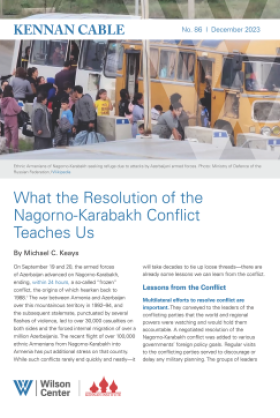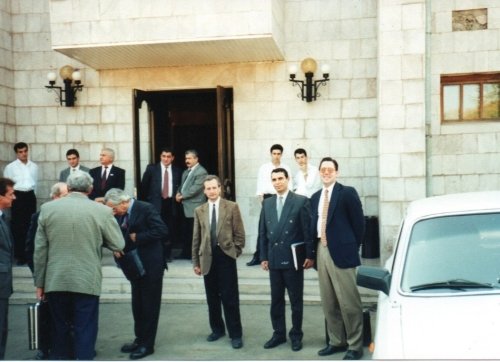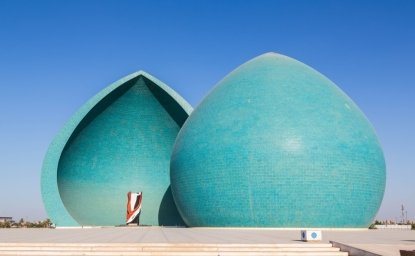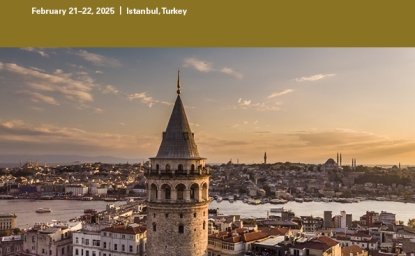Kennan Cable No. 86: What the Resolution of the Nagorno-Karabakh Conflict Teaches Us



On September 19 and 20, the armed forces of Azerbaijan advanced on Nagorno-Karabakh, ending, within 24 hours, a so-called “frozen” conflict, the origins of which hearken back to 1988.[1] The war between Armenia and Azerbaijan over this mountainous territory in 1992–94, and the subsequent stalemate, punctuated by several flashes of violence, led to over 30,000 casualties on both sides and the forced internal migration of over a million Azerbaijanis. The recent flight of over 100,000 ethnic Armenians from Nagorno-Karabakh into Armenia has put additional stress on that country. While such conflicts rarely end quickly and neatly—it will take decades to tie up loose threads—there are already some lessons we can learn from the conflict.
Lessons from the Conflict
Multilateral efforts to resolve conflict are important. They conveyed to the leaders of the conflicting parties that the world and regional powers were watching and would hold them accountable. A negotiated resolution of the Nagorno-Karabakh conflict was added to various governments’ foreign policy goals. Regular visits to the conflicting parties served to discourage or delay any military planning. The groups of leaders and officials from the conflicting parties in Nagorno-Karabakh were relatively small and challenged with many issues at the same time, so whenever they had to deal with special negotiators from the U.S., Russia, France, and other countries, they had to put down what they were doing at the time.

The interest and involvement of several countries in the region ensured that the conflict would not fade away and be forgotten; this is a feature of human behavior often referred to as “compassion fatigue.” Consider the fact that, as of this article’s publication, over 50 conflicts are currently active in the world—and that number doesn’t consider non-state conflicts. Counting those, the number is well over 80. Most of these are in Africa, and coverage of them in the mainstream media is rare.[2] In the U.S., what should have been an obscure conflict occasionally received press coverage so that Americans beyond just the Armenian diaspora knew about it. Public interest tends to have an impact on whether governments make an issue a priority or not.
“Frozen” conflicts can flash at any moment. This is true especially if mediators are distracted. Back in the late 1990s, there was a view that someday, Azerbaijan would probably retake the Nagorno-Karabakh region by force with a modern, appropriately sized army purchased with oil money. This concern was allayed by the sense that the conflict would have to be resolved before oil from the region could get out to Western markets, something that seemed distant. That sense of distance fell apart when the Baku-Tbilisi-Ceyhan pipeline was opened in 2006.[3] Once the oil started flowing, Azerbaijan’s financial situation improved, and, not surprisingly, the country started working on building up its military capabilities. Seventeen years later, it found itself in a position to try to retake Nagorno-Karabakh militarily. It helped that it not only had the means but had the space, in the sense that Russia and the U.S. were focused on Russia’s brutal war against Ukraine. What was considered by many experts a “frozen” conflict suddenly became hot, and then ended even more suddenly. The military resolution of the situation also reminds us that seemingly endless conflicts can actually end. Nagorno-Karabakh has gone the way of Tamil Tiger-occupied Sri Lanka, a conflict which also appeared irresolvable until 2009.[4]
Money talks, and who your friends are matters. Azerbaijan slowly built up its army with the intent of taking back Armenian-occupied areas surrounding Nagorno-Karabakh and the region itself. Azerbaijan’s defense spending grew dramatically starting in 2004, from $144 million in 2003 to $1.2 billion in 2008. In January 2009, Azerbaijan claimed it would increase its defense spending to $2.3 billion. It could do that because its economy was growing at an unprecedented rate. Smart spending is as important as being able to outspend your opponent. While Azerbaijan’s armed forces decreased in terms of personnel from 2007 to 2019, its quality increased significantly, primarily due to assistance received from Turkey and Israel, but also the U.S.
Azerbaijan Armed Forces
2007[5] 2019[6]
Army: 85,000 56,000
Air Force: 8,000 8,500
Navy: 2,000 2,500
Total personnel: 95,000 67,000
In a war of attrition, numbers are significant, but in this case, the capabilities edge on the Azerbaijan side—largely due to training, military exercises, and technological force multipliers—proved to be the winning factor, even as it was on the offense and had to fight uphill. Turkey has been heavily involved in the modernization of Azerbaijan’s military since 1992, and it started providing Azerbaijan more robust professional military education and access to joint training and exercises in 2010.[7] Israel also played a key role in Azerbaijan’s military modernization. In 2012, Azerbaijan purchased $1.6 billion worth of weapons from Israeli Aerospace Industries, an additional $5 billion worth of weapons in 2016, and another $127 million worth of weapons in 2017.[8] Most of the purchases consisted of unmanned aircraft and satellite technology to improve battlespace awareness for the Azerbaijani Armed Forces.
All of this proved critical to Azerbaijan’s victories on the battlefield in the fall of 2020, and then its retaking of Nagorno-Karabakh in September of this year. This also revealed the substantial weakness of Nagorno-Karabakh's defense forces and Armenia’s political and logistical ties. Russia, Iran, and the worldwide Armenian diaspora—Armenia’s allies and supporters and, through it, supporters of Nagorno-Karabakh—proved incapable of defending those trying to tear the region away from Azerbaijan. The wealth and generosity of your allies matter, and in this case, Azerbaijan had the better, more capable allies. President Ilham Aliyev has demonstrated that he is not as weak as observers once worried he was after the 2003 death of his father, Heydar Aliyev. Azerbaijan’s security and negotiating position are much improved now.
Occupying another country’s land is costly and usually ends badly. Armenia had external support from its wealthy and politically influential diasporas located in the U.S. and France, among other places. These communities did a lot to keep up the dream of an independent so-called Nagorno-Karabakh Republic (“Artsakh,” according to Armenians) alive—even at one point by financing the construction of an impressive highway linking Yerevan with Stepanakert/Khankendi—but enthusiasm, the leveraging of sympathetic politicians in important countries, and money to build roads and churches rarely change the conditions on the ground that matter in warfare. In fact, these factors can intensify the desire of refugees and internally displaced people to return to their homeland, and push for the chance to do so.
Immediate Lessons
Beyond the key takeaways above, we should consider three more ideas as we reflect on Azerbaijan’s recent military operation in its Nagorno-Karabakh region.
First, this is an opportunity for the U.S. and allies to reach out to Armenia to help it to process what just happened and support the displaced. Russia and its peacekeepers standing between the Azerbaijanis and the Nagorno-Karabakh Armenians clearly failed to stop Azerbaijan’s offensive. Russia and Iran are increasingly becoming pariah states, given their aggression against Ukraine and Israel, respectively. They are on self-defeating trajectories. Armenia should be encouraged to further orient itself westward.
Second, the inaction of Russia’s peacekeepers in Nagorno-Karabakh as Azerbaijani forces advanced might suggest to outside observers that Russia is distracted and stretched to the limits by Ukraine. In other words, Russia’s ongoing occupation of parts of Georgia (Abkhazia, South Ossetia) and its troops in Transnistria without the government of Moldova’s consent, while long-standing, might be worth pushing against, as Russia may not be as strong as we have long believed. At least it could be perceived that way after what just transpired in Azerbaijan. This bears further analysis.
In the meantime, if the U.S. and other Western countries have not yet done so, they might consider cautioning the Moldovans and Georgians not to test Russian resolve, given Mr. Putin’s likely, unpredictable, and escalatory reaction to a testing of perceived Russian vulnerability. And the U.S. and others should keep an eye on Transnistria and the occupied territories Russia has been expanding in Georgia. Several recent and upcoming events concerning Moldova could provoke incidents, including the November 5 local elections, the potential parliamentary approval of Moldova’s National Security Strategy (which lists Russia as its main external threat), the EU’s decision about whether formal accession talks with Moldova can begin, and the renewal or expiration of the OSCE mandate in Moldova by the end of the year. It is worth remembering that Moldova is neither a member of NATO nor the EU and is not far from the Ukrainian port city of Odesa. Russia has been repeatedly targeting Odesa with missiles and drones, possibly as part of a larger effort to take Ukraine’s entire Black Sea coast and link Russia up with Transnistria to Ukraine’s west.
Third, if the U.S. and its allies and partners have not yet done so, they should make it clear to Azerbaijan that they will be watching them in the post-conflict period. As the saying goes, they should “trust but verify.” They should also warn Azerbaijan not to take military action to establish a land bridge between Azerbaijan proper and the exclave of Nakhchevan, an act which would require the seizure of Armenian territory.
Michael C. Keays is a senior diplomatic fellow at the Kennan Institute of the Wilson Center. While the author is on detail from the State Department to the Kennan Institute, the views are his own and do not necessarily reflect the views of the U.S. government or the Wilson Center.
[1] Vladimir Solovyov, “Azerbaijani Control of Nagorno-Karabakh Will Not Stop Conflict in the South Caucasus,” Carnegie Politika, September 28, 2023, https://carnegieendowment.org/politika/90655
[2] Anna Marie Obermeier and Siri Aas Rustad, Conflict Trends: A Global Overview, 1946–2022 (Oslo, Norway: Peace Research Institute Oslo, 2023), https://reliefweb.int/report/world/conflict-trends-global-overview-1946-2022#:~:text=Despite%20the%20increase%20in%20battle,in%2038%20conflict%2Daffected%20countries
[3] bp Azerbaijan (website), “Baku-Tbilisi-Ceyhan Pipeline,” https://www.bp.com/en_az/azerbaijan/home/who-we-are/operationsprojects/pipelines/btc.html
[4] Jayshree Bajoria, “The Sri Lankan Conflict,” Council on Foreign Relations, updated May 18, 2009, https://www.cfr.org/backgrounder/sri-lankan-conflict
[5] GlobalSecurity.org (website), “Azerbaijan—Introduction,” https://www.globalsecurity.org/military/world/azerbaijan/intro.htm
[6] Edward J. Erickson, “The 44-Day War in Nagorno-Karabakh: Turkish Drone Success or Operational Art?” Military Review, August 2021, https://www.armyupress.army.mil/Journals/Military-Review/Online-Exclusive/2021-OLE/Erickson/
[7] Haldun Yalçınkaya, “Turkey’s Overlooked Role in the Second Nagorno-Karabakh War,” GMF (German Marshall Fund), January 21, 2021, https://www.gmfus.org/news/turkeys-overlooked-role-second-nagorno-karabakh-war
[8] Erickson, “The 44-Day War.”


The Kennan Institute is the premier US center for advanced research on Eurasia and the oldest and largest regional program at the Woodrow Wilson International Center for Scholars. The Kennan Institute is committed to improving American understanding of Russia, Ukraine, Central Asia, the South Caucasus, and the surrounding region through research and exchange. Read more


